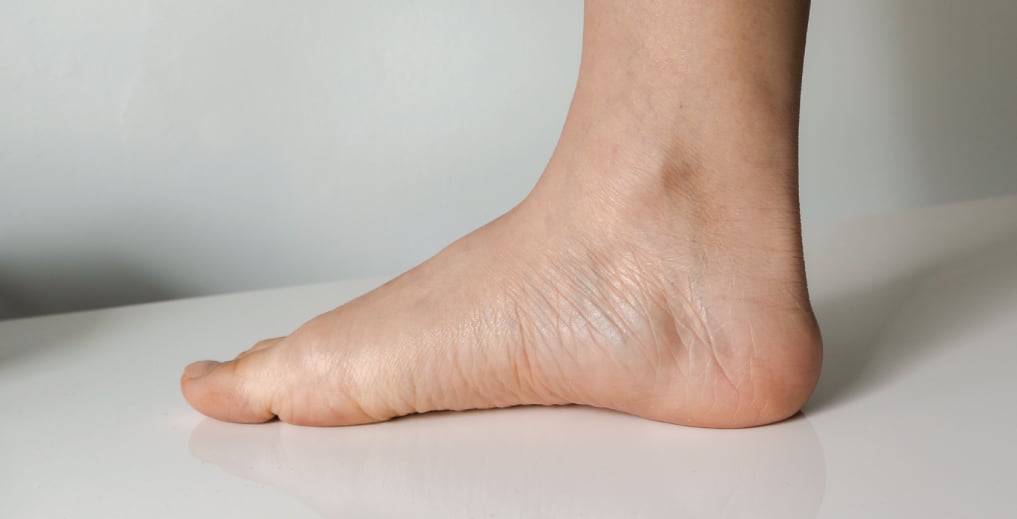
Pronation: How is it measured?
We often get asked what the difference is between normal pronation and overpronation. This blog continues our theme on overpronation and will focus now on how we measure pronation. Measuring pronation is an important step in knowing how much is too much. By the way, the answer is 10 (read below to find out more).
Before we begin, it is worth mentioning again that pronation is a natural human movement. More specifically, it is the foot and ankle’s response to body weight when the ankle flexes and the arch flattens. During these movements of pronation, the joints of the foot become more flexible allowing them the absorb impact forces much better than if your foot was just one big bone! Therefore, some pronation is not only acceptable, it is actually a really important part of walking or running.
While pronation is important, clinicians have noticed certain injuries are associated with increased amounts of pronation; furthermore, these injuries are helped when we use orthotics to support that pronation. To help Kintec Pedorthists understand whether someone’s pronation is ‘within normal limits’, as we say, we measure it using a tool called the Foot Posture Index.
Foot Posture Index
Historically, pronation was measured based only on a clinician’s impression of foot’ flatness’. However, this subjective approach is problematic because different clinicians can have different criteria when defining whether a foot is flat or not. To help our pedothists have a way of clearly measuring a foot’s posture (flatness) that is both accurate and repeatable, Kintec uses The Foot Posture Index (FPI) during all of our assessments.
The FPI was developed by Professor Anthony Redmond at the University of Leeds to provide clinicians in the foot-care industry a quick but robust way to assess a patient’s standing foot posture. Taking often less than a minute to complete, the FPI examines SIX different parts of your foot. Because everyone’s feet respond differently to their body weight, we can’t just look at one part of your foot, such as your arch height. With the FPI, we also look at whether your ankle is shifted more to the inside (refer to Talar Head Palpation & Ankle Curvature images below), whether your heel is tilted inward or outward (refer to Calcaneal Position & Bulging images below), and how your forefoot curves in response your body weight (refer to Forefoot Adduction & Abduction image below). Kintec looks at ALL these parts of your feet to help us know how to design your treatment plan to provide the proper support to the right part of your foot.
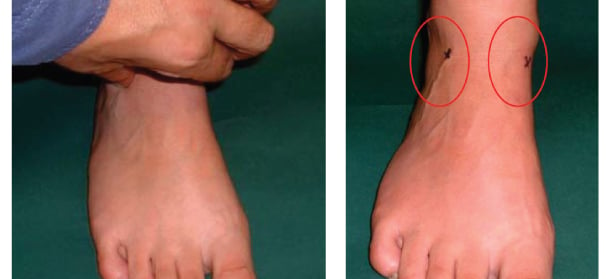
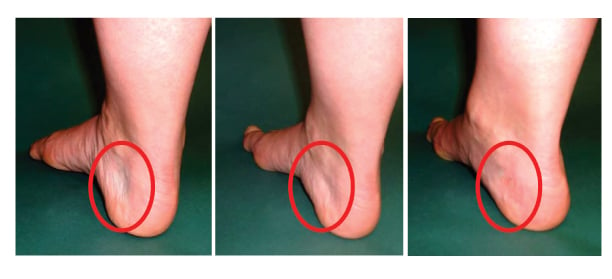
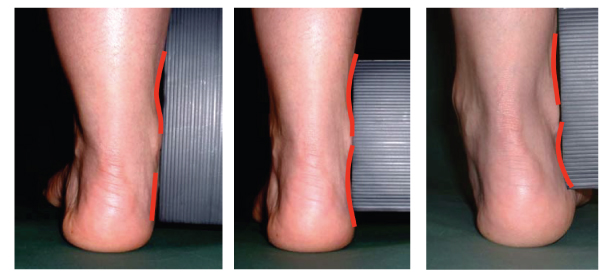

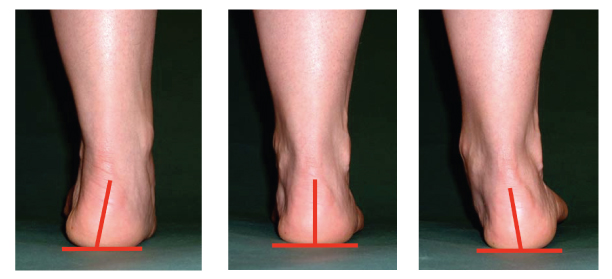
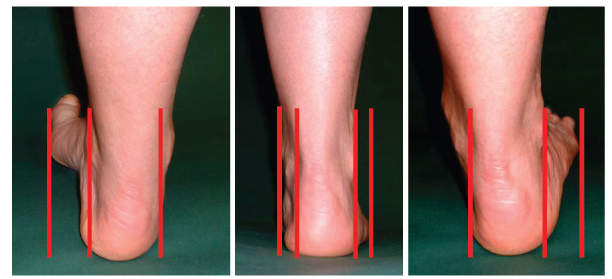
Source: The Foot Posture Index, Anthony Redmond
Foot Posture Index Across the Population
While it’s great having a tool to measure foot posture that is both accurate and reliable, it’s also great having a way of telling someone where their foot posture is relative to the population. To do that, we first need to talk about what FPI scores mean (see the Figure above for reference).
The graph above is showing the FPI scores for 24,691 patients who’ve been assessed by a Kintec pedorthist over the past 3 years. The FPI places all feet on a scale from –12 to + 12, with a score of ‘0’ indicating a completely neutral foot (see black line in graph). Higher positive scores mean increasing pronation (low arch), and higher negative scores mean increasing supination (high arch). The green dashed line at ‘+5’ corresponds with the average amount of pronation across the population, while the red dashed line at ‘+10’ indicates an abnormally high amount of pronation.
Prof Redmond’s research also supports an FPI value of ‘+10’ being the cut-off for when the amount of pronation is considered excessive. It is reasoned that at values of 10 or higher, the distribution of load is significantly unbalanced across the inside and outside part of your ankle and leg creating a higher risk of injury. Also remember that the same holds true on the other end of this spectrum; FPI values of ‘-1’ or less are considered to be at increased risk of injury due to excessively high arched feet.
Remember tools like FPI provide insights on injury risk and are useful for understanding probability of injury but are not definitive. Some people with very high FPI scores never get injured, while others with moderate FPI scores frequently complain of pain.
Want to know what your FPI is?
Book an assessment with one of our Canadian Certified Pedorthists today for a thorough assessment.
Our new One2One program will provide you with the highest level of safety and personalized service for all of your orthotic, footwear and bracing needs.

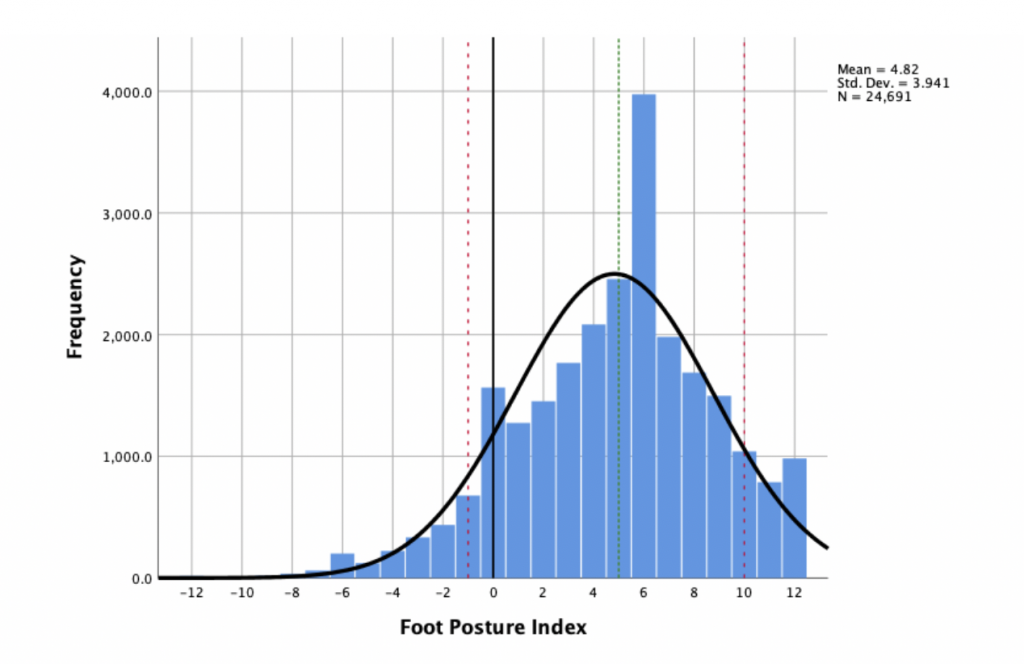
No Comments